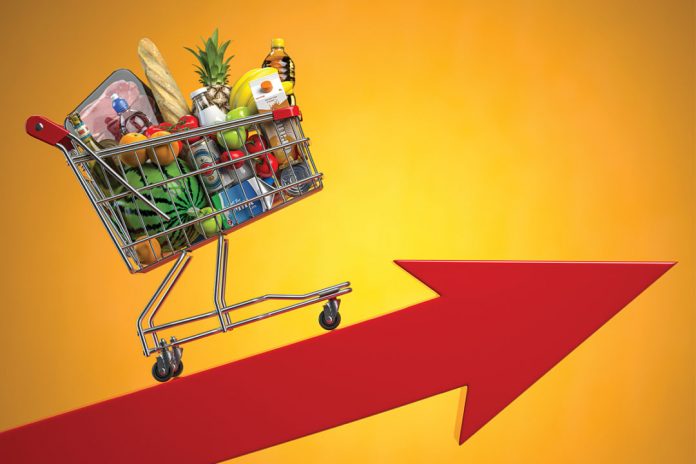Food inflation, how the price of food changes over a period of time, has continued to rise every month in Nigeria. As a subset of overall inflation and given its importance to nutrition, it affects household budgets and overall economic stability. In lower income nations, food inflation affects the population’s purchasing power the most because a bulk of their income goes into acquiring food.
The chart below shows the month-on-month (MoM) and the year-on-year (YoY) increase for food inflation. According to the National Bureau of Statistics (NBS), food items considered for the data collation includes bread and cereals, oils and fat, potatoes, fish, yam and other tubers, fruits, meat, vegetables, milk, cheese and eggs.

The Food inflation rate in July 2023 was 26.98% on a YoY basis, which was 4.97% points higher compared to the rate recorded in July 2022 (22.02%). On a month-on-month basis, the Food inflation rate in July 2023 was 3.45%, this was 1.06% higher compared to the rate recorded in June 2023 (2.40%). The average annual rate of Food inflation for the twelve-month ending July 2023 over the previous twelve-month average was 24.46%, which was 5.71% points increase from the average annual rate of change recorded in July 2022 (18.75%).
While the NBS does not offer an explanation as to why the YoY changes are in 20s, there are some reasons for this. One factor driving the price of food up is the depreciating Naira value and its impact on cost of imported food. Also, the removal of fuel subsidy by the end of May 2023, clearly caused a higher YoY rate as we see in June and July.
Notably, while consumers find it harder to afford food, processers and producers, who are able to keep cost down, can benefit from continued food inflation. We saw this example recently with Indian tomato farmers making a fortune from rise in the commodity’s price. Another example is Nigerian processing company, Dangote Sugar, gaining over 220% between January 2023 and August 2023, amidst rising cost of food.



